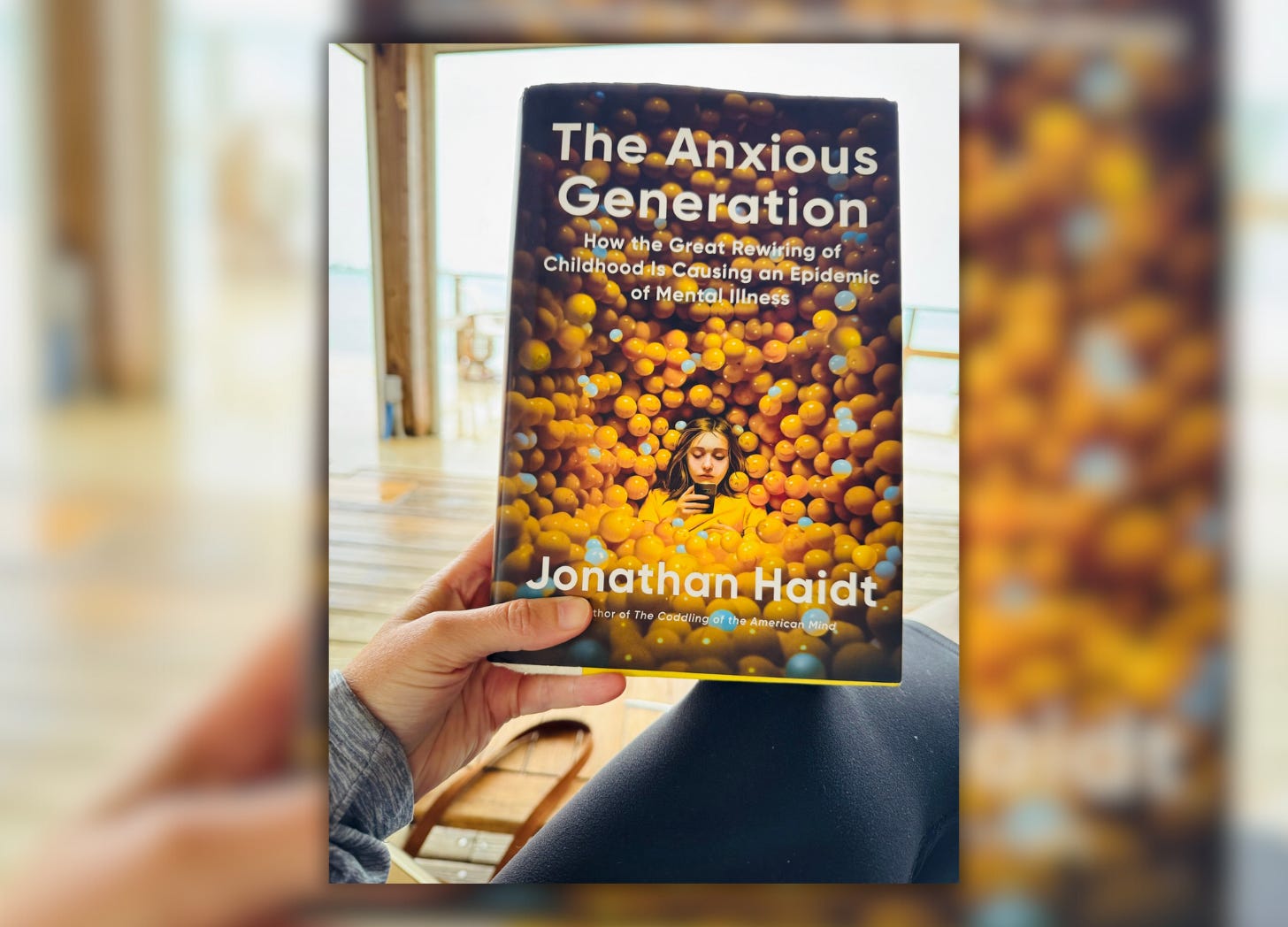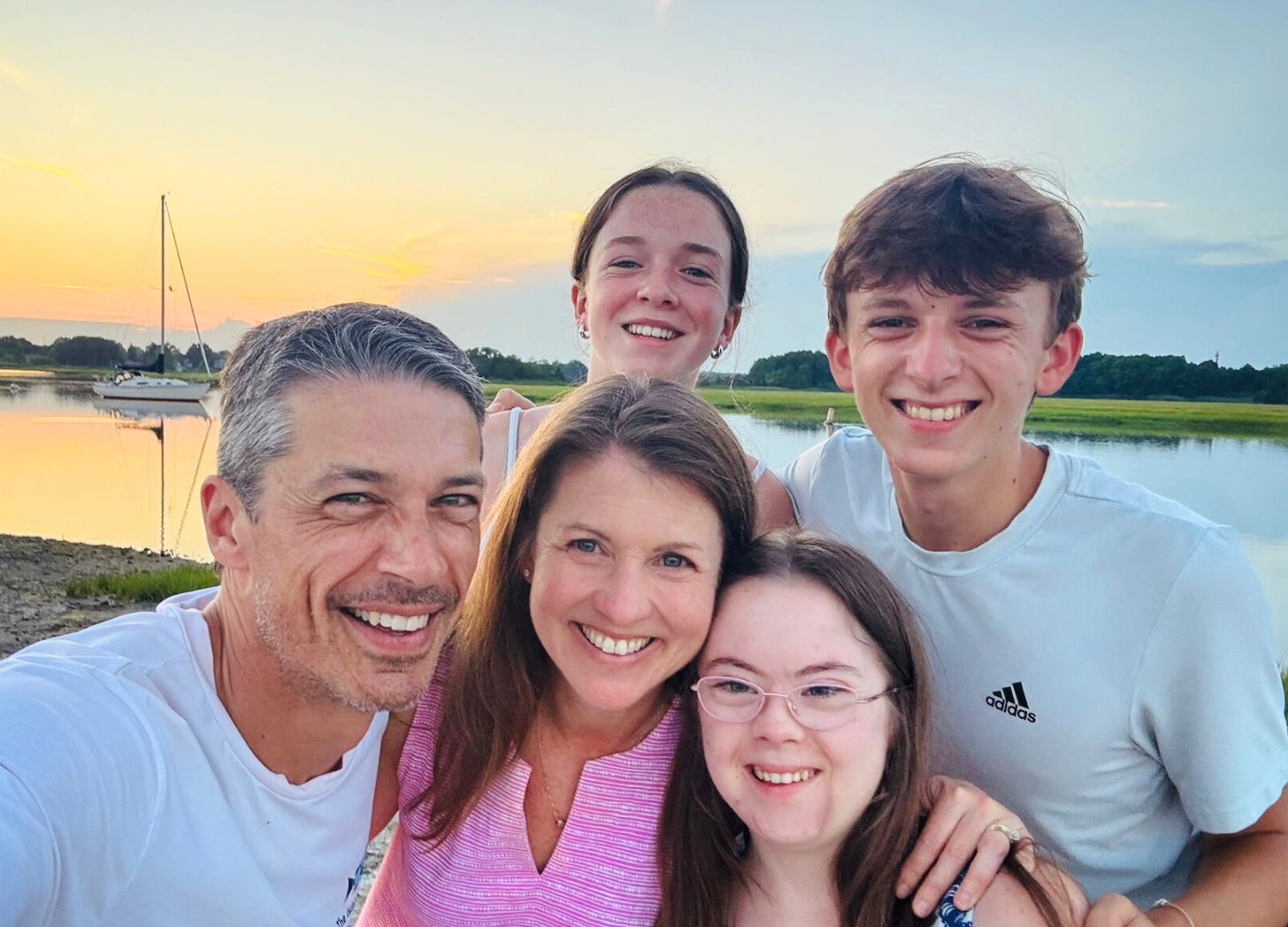When we turn the corner to summertime, I sink into gratitude for slower days and longer evenings, for hydrangeas and peaches, for more time together as a family. I also dread the constant conversation with our teens—or should I say, the constant conflict—over the use of screens/devices/phones.
Our kids are now 18, 15, and 13. All of them have their own iPhones and laptops. All of them drift quickly and easily into their own worlds of YouTube videos and shopping websites and relative isolation. The instinct to stare at the screen remains constant all year long, but in the summer, there’s just so much more time.
The Anxious Generation

If you aren’t familiar with Haidt’s work, in a nutshell he offers data to suggest that a phone-based childhood (his phrase) leads directly to the steep rise in clinical anxiety and depression among teenagers that we’ve seen in recent years. He claims that we have:
overprotected children in the real world and underprotected them in the virtual world.
We have a collective problem, which requires a collective solution that involves parents and schools and governmental intervention.
Pulled Down or Lifted Up?
Haidt’s analysis helps put data to our experience, but what was most helpful to me in reading this book is his insistence that a phone-based life does spiritual harm. Haidt calls himself an atheist, and yet he insists that humans are spiritual creatures in need of spiritual experiences, communities, and practices. The disembodied, asynchronous, self-centered world of social media and internet entertainment and material consumption pulls us away from some of our most crucial needs. Haidt uses the language of elevation. He says we need to be “lifted up”—through friendships and experiences of awe and moments of transcendence. But most of our experiences on screens pull us down instead.
If there is anything I want our kids to learn deep in their souls it is that they are loved, they have purpose, they belong. I want them to be lifted up. I want them to lift others up.
So. Am I taking away their phones? No. But we are implementing a number of practices as a family that both limit screen time and, perhaps more importantly, emphasize spiritual connection.
Family Practices
We are bumbling our way into this, with no right answers about how much screen time is the right amount, with concern over micromanaging their lives, with blurred lines about when the phones are a pretty good means of connection with other people and when they are a pretty bad means of deadening our souls.
Jonathan Haidt offers four solutions:
- No smartphones before high school (that ship has sailed in our household).
- No social media before 16 (again, missed that boat).
- Phone-free schools. (Two of our kids got that through middle-school.)
- Far more unsupervised play and childhood independence.
It’s that last point that hints at our kids’ spiritual development. Last summer, I offered a list of five ways that our family is approaching the use of screens in the household. (I’ve revised that list here.) But that list had more to do with how to monitor phone usage, and Haidt’s book has convinced me that it is even more important that we:
- encourage embodied, synchronous, communal experiences
- give our kids greater responsibility for themselves and our household
- both model and teach them contemplative practices
Embodied, synchronous, communal experiences.
This includes everything from summer camp to encouraging them to invite friends over to going to church on Sunday to going on vacation and serving at Hope Heals as a family.
Greater responsibility.
In our family, this means lots of participation in household tasks: laundry, dishes, cat litter, and cooking. It also means encouraging them to bake muffins at 10:00 at night and use the ice cream maker that’s been on the high shelf for a year and cut flowers from the garden and try arranging them. It means William took his first flight by airplane and Penny is learning how to make enchiladas and Marilee packed for camp by herself.
Contemplative practices.
Here, we aren’t making our kids learn meditation or sit in silence for 20 minutes or anything like that. We are just being intentional—at the dinner table, on walks, in the car—to ask questions that prompt reflection.
- What was a time this week when you experienced gratitude?
- What are you looking forward to about the week ahead?
- What’s something you’re curious about?
- What was the best meal you ate last week?
- How have you grown up this year?
- Are there ways you want to grow more this summer?
- What mistakes have you made lately? Have you learned anything from them?
Somehow, reframing my role as a parent to see it less as a police force and more as a nurturer has helped me feel a little less defeated and cynical when addressing the temptations of our life with screens. It has reminded me that we can still give our kids daily ways to know they are loved and that their lives have purpose.
It has given me hope that all of us can learn and choose ways of being—even in this digitized world—that lift one another up.

MORE WITH AMY JULIA:
- FREE RESOURCE: 5 Screen Time Practices for Families | Summer Edition
- Screen Time Check-In
- 7 Things That Happened During Our Week Without Screens
Let’s stay in touch. Subscribe to my newsletter to receive regular updates and reflections. Follow me on Facebook, Instagram, and YouTube and subscribe to my Reimagining the Good Life podcast.



